Sheremetyev Estate Museum Kuskovo: history, how to get there, what to see
Several noble estates have been preserved in Moscow, and, of course, one of the most beautiful and interesting to visit is the Kuskovo estate, which belonged to the ancient Sheremetev family for almost 300 years. They owned houses in Moscow and St. Petersburg, the Ostankino, Ostafyevo estates and many other estates, but it was Kuskovo that was created for entertainment: balls and luxurious receptions, so every corner of the estate was designed to please the eye.
Kuskovo estate. Castle
History of the Kuskovo estate
Already in the 16th century, the village of Kuskovo was mentioned as the property of the Sheremetevs; there was a manor house, premises for serfs and a wooden temple. In the era of Peter the Great, Boris Petrovich Sheremetev distinguished himself as a prominent military leader and statesman; he was the first in Russia to receive the title of count. Later he became related to Peter the Great by marrying his uncle's widow. It is known that the emperor himself was present at the magnificent wedding. However, at that time, Count Sheremetyev called his possessions east of Moscow a “piece”, since they were very small, hence the name Kuskovo. And the neighboring lands belonged to an important statesman, Prince A.M. Cherkassky. The son of Count Sheremetev, Pyotr Borisovich, married his only daughter and heir to his entire enormous fortune, thereby increasing his possessions several times. In the 18th century, the Kuskovo estate spread over an area of 230 hectares (for comparison, it now occupies approximately 32 hectares).
Under Pyotr Borisovich, an architectural and park ensemble of the estate was formed, which was divided into three parts: behind the pond there was a menagerie and a kennel, in the center there was a regular French park with a Grand Palace for receptions, and there was also an English park. Hundreds of serfs dug the Great Pond, in which fish were bred and served at ceremonial dinners. This pond was also used for boating. It is the central part of the estate with the palace and a beautiful park copied from Versailles that has been best preserved to this day.

Plan of the Kuskovo estate. Source: http://kuskovo.ru/
A linden alley leads from the gate to the Big House, and the crowns of the trees in the park have been given the shape of a ball. This is what distinguishes a French park from an English one: it is believed that in a French park everything should demonstrate the subordination of nature to man, while the English park looks more natural, and man only adapts to the natural landscape. Along the way we see the oldest building of the estate - the Church of the All-Merciful Savior with a bell tower, built in 1737 on the site of an old wooden church.
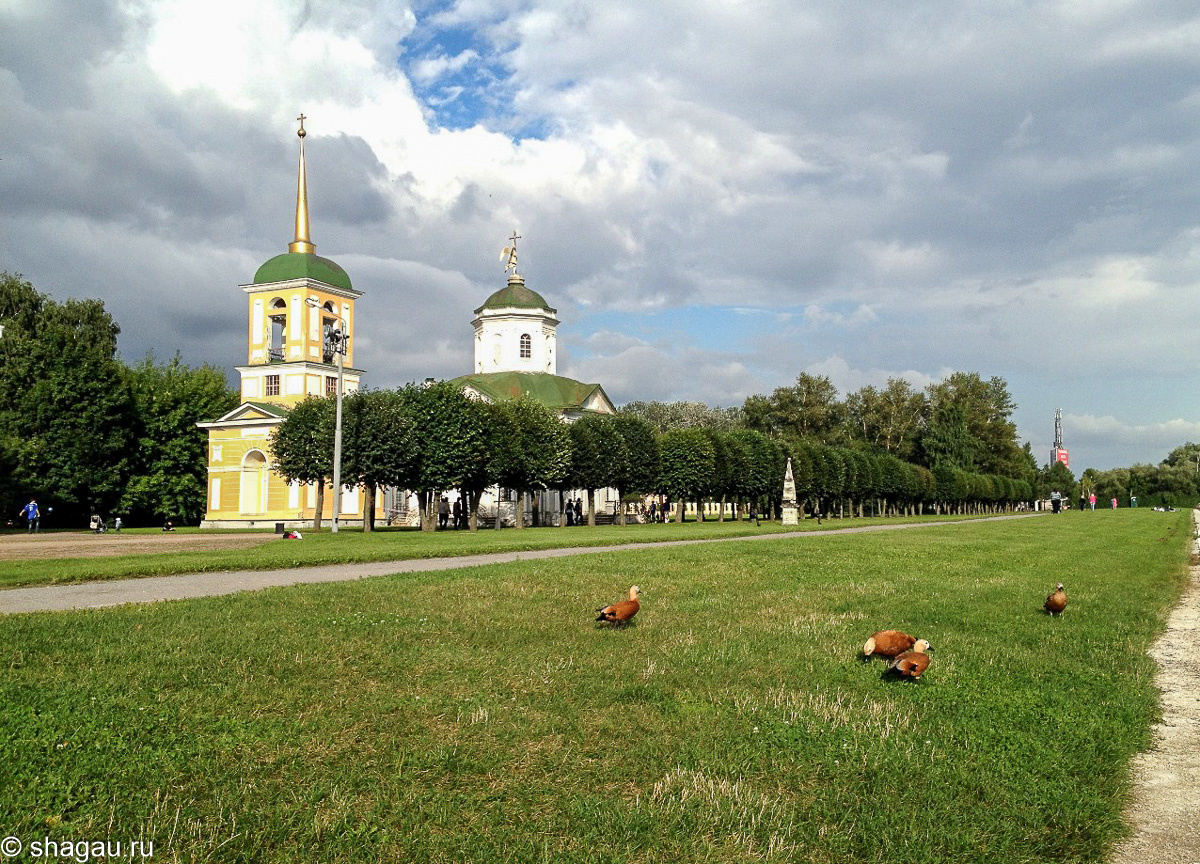
Church of the All-Merciful Savior
Then comes the Grand Palace, built specifically for ceremonial summer receptions. In appearance it appears to be made of stone, although it is made of wood. The best architects were invited to design the manor house, but ultimately they chose the design of K.I. Blanca.
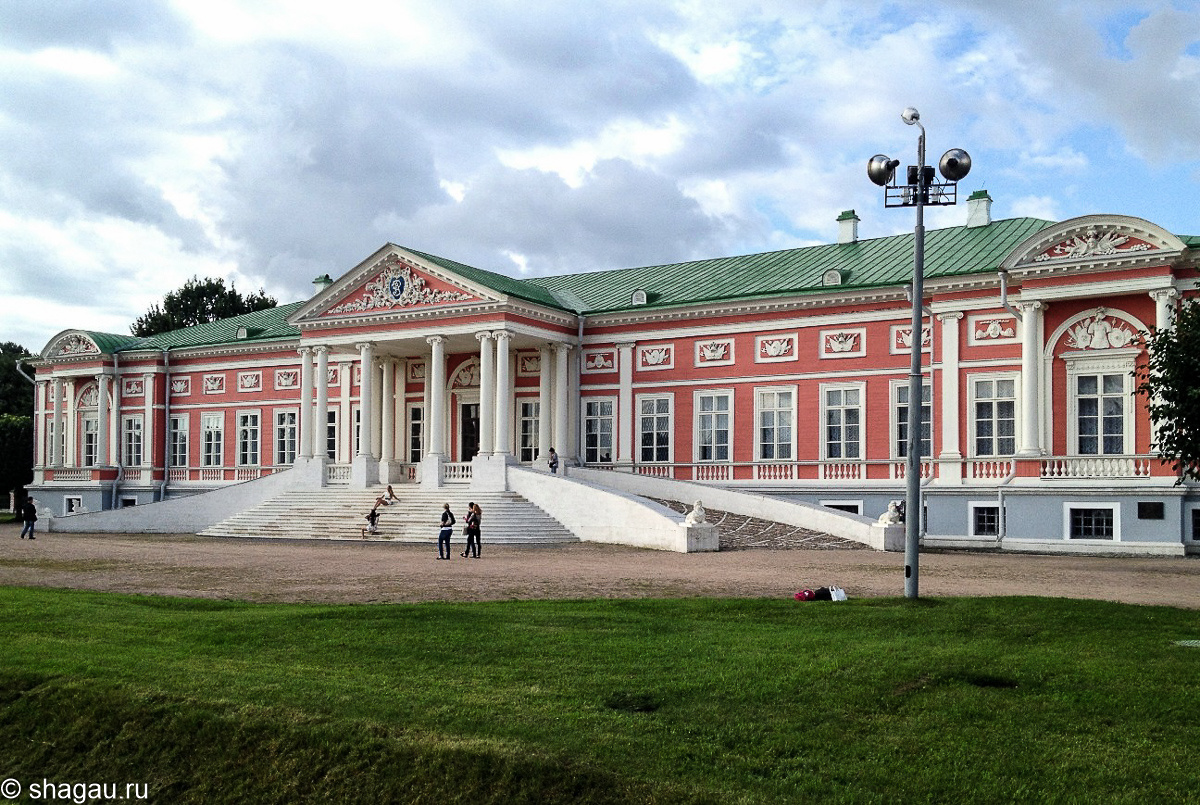
Palace in Kuskovo
Now a soft pink palace with a front porch is reflected in the surface of the water of the Big Pond. There are ramps leading to the main entrance, which were created to allow guests to drive directly to the entrance of the house. These ramps are crowned with figures of sphinxes.
Palace in Kuskovo
We began our tour of the Kuskovo estate with a visit to the Big House. In those days when the Sheremetevs held balls here, only the most distinguished public were allowed into the palace. Usually there were no more than a hundred guests. While the entire estate could accommodate up to 30 thousand people.
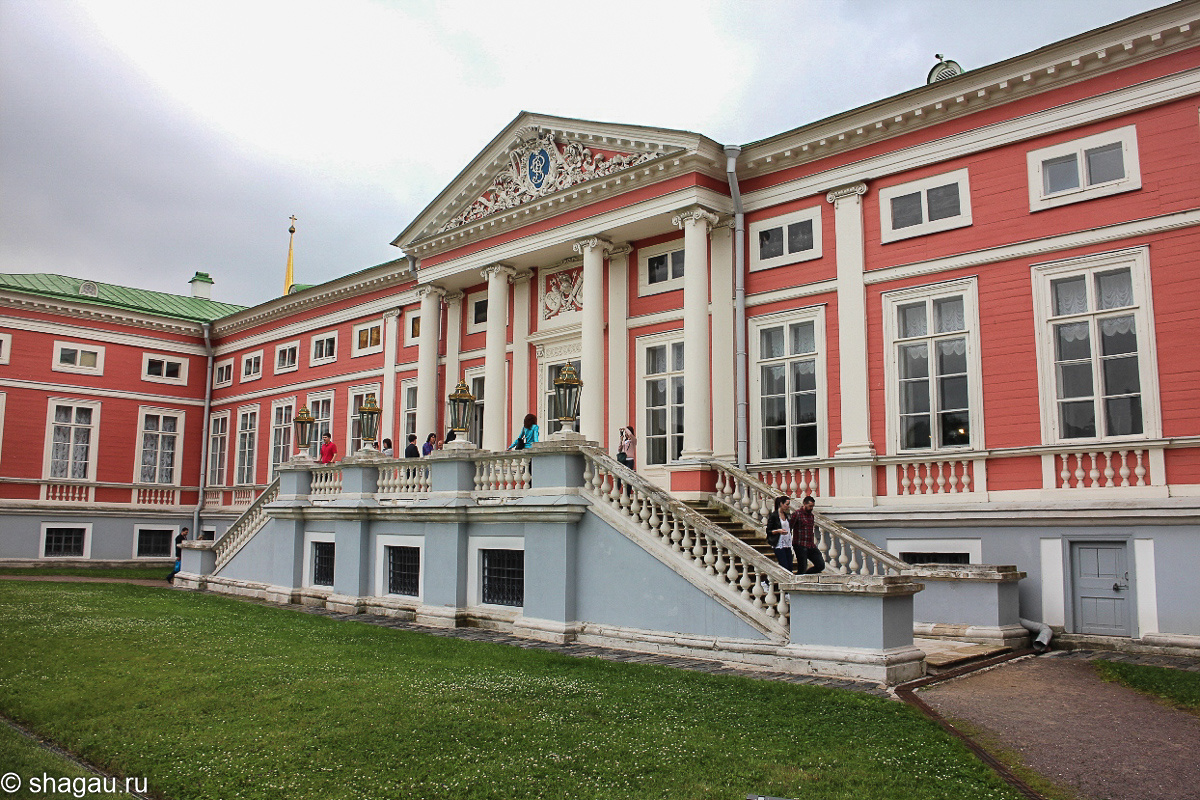
Palace in Kuskovo
First, guests found themselves in an entrance hall-living room, the walls of which were decorated with Flemish tapestries made at the end of the 18th century. They depict fragments of a park very similar to the one that existed in the Kuskovo estate. In addition, here you can see a trellis with a portrait of Empress Catherine the Great, made in St. Petersburg. It is known that Catherine II attended receptions in Kuskovo six times, and many European kings and aristocrats attended balls at the estate with her.
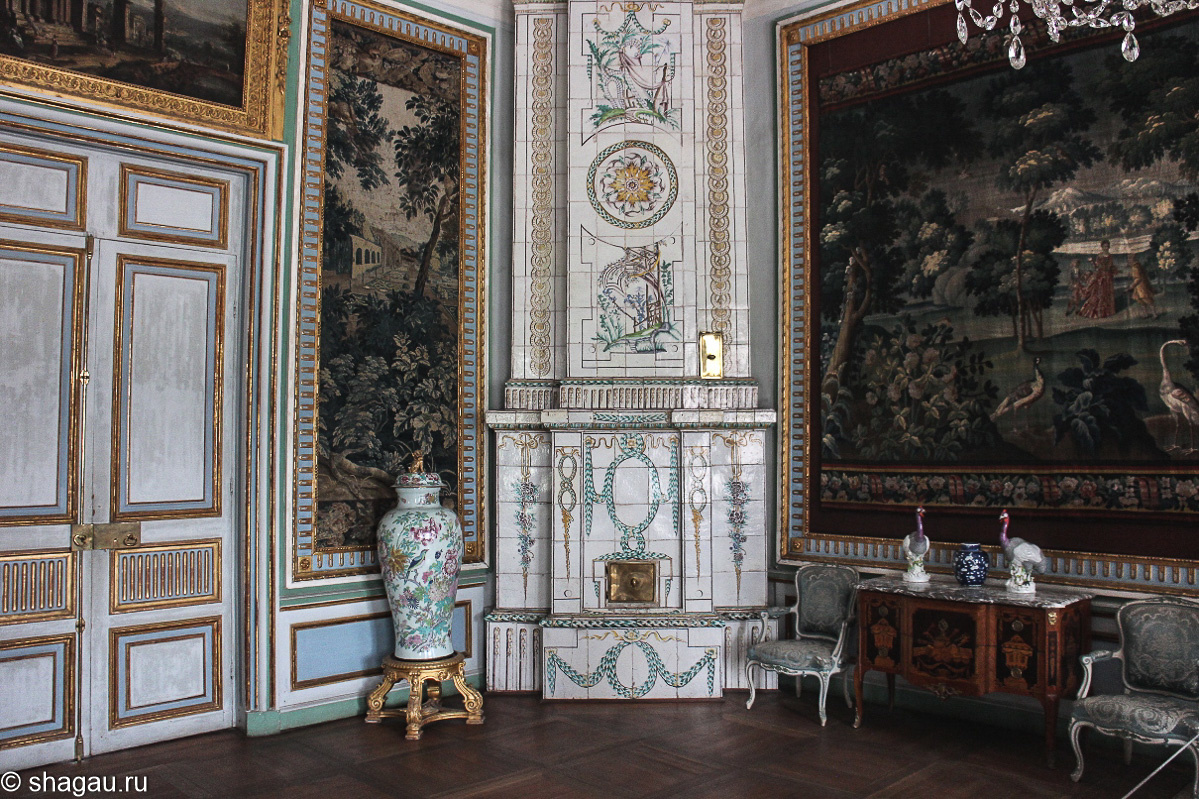
Hallway-living room
We move into the crimson living room, where you can see busts of B.P. Sheremetev and his wife, portraits of Empress Catherine the Great, her son Pavel Petrovich and his wife, as well as a ceremonial portrait of Pyotr Borisovich Sheremetev, who created this grandiose estate in the form that we now see.
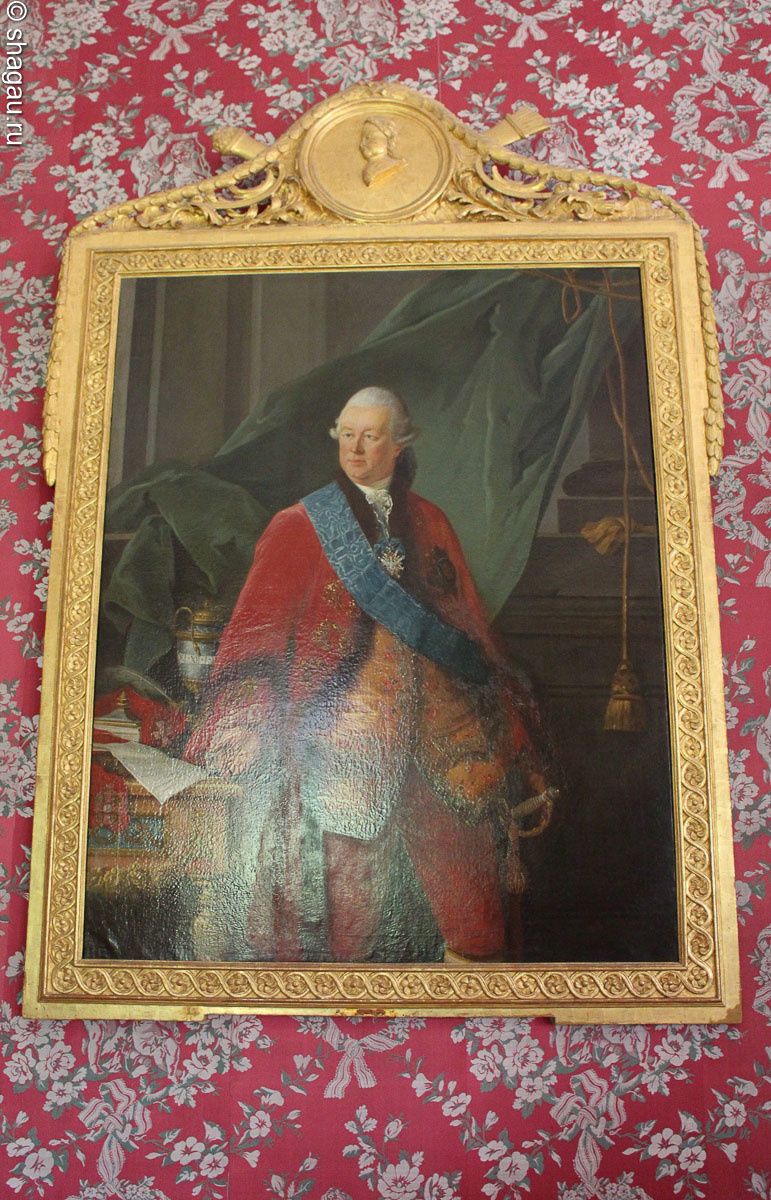
Portrait of Pyotr Borisovich Sheremetev
![]()
Raspberry living room
When guests entered the crimson living room, they heard music coming from the organ. Unfortunately, the clocks with moving figures that decorated this instrument have not survived to this day. The fact is that Napoleon’s troops stayed in the estate in 1812 and many valuables disappeared without a trace after their visit.
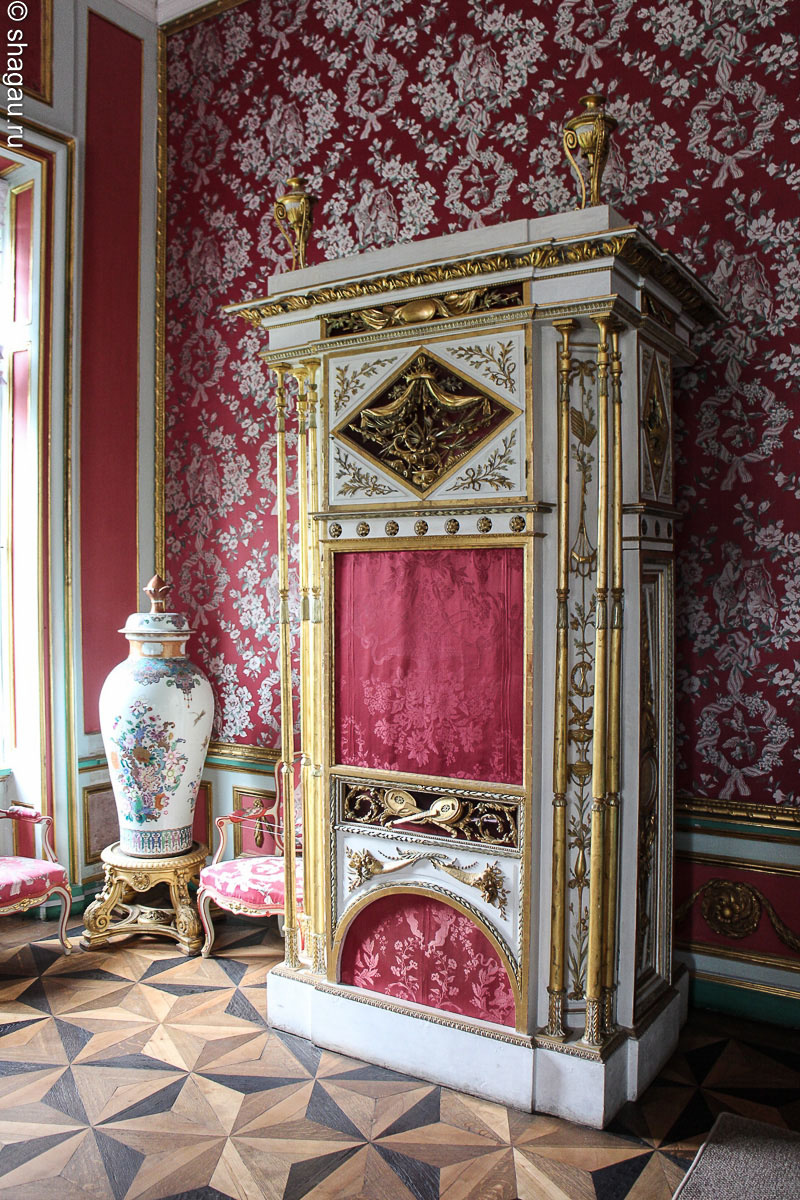
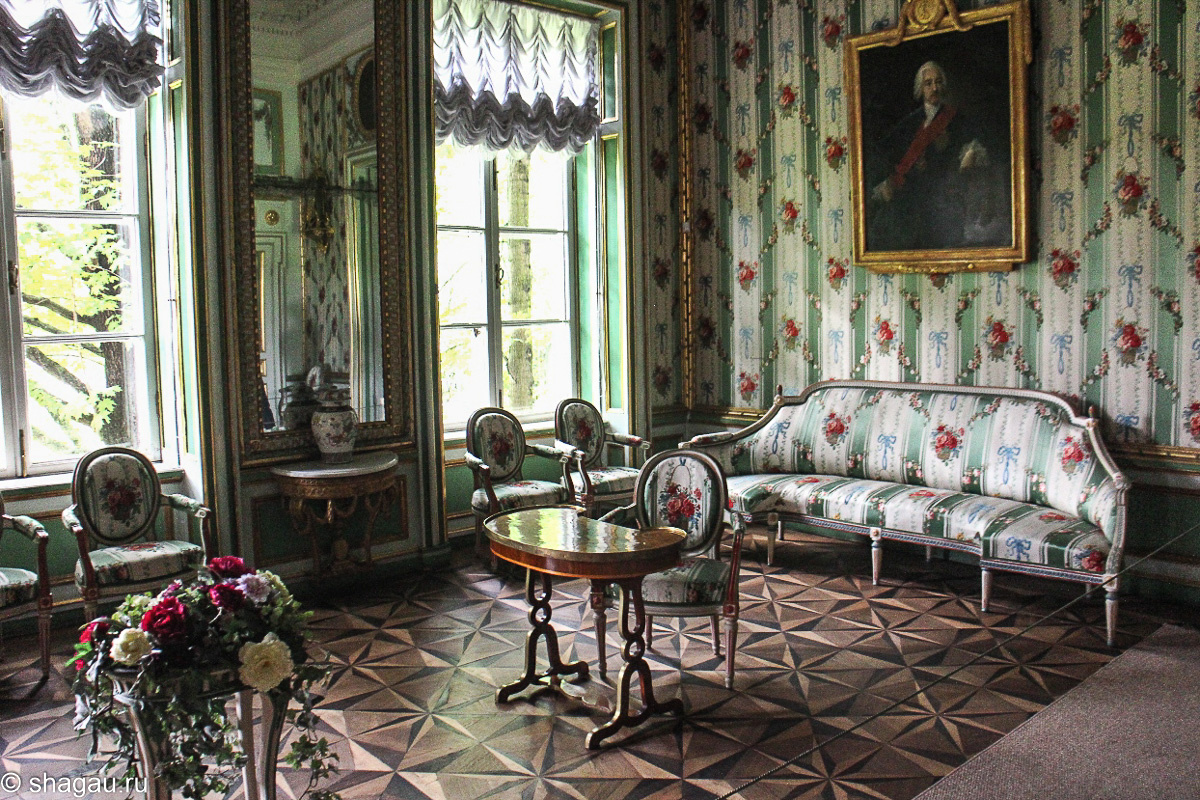
Front bedroom
Then there is an office-desk where you can see a unique table for storing sheet music. On its tabletop, the author created a panorama of Kuskovo from different types of wood. The work was very difficult and painstaking; they say that at the end the master lost his sight and finished the table, no longer seeing the result. The office and the adjacent restroom, sofa and library belong to the count's personal chambers.
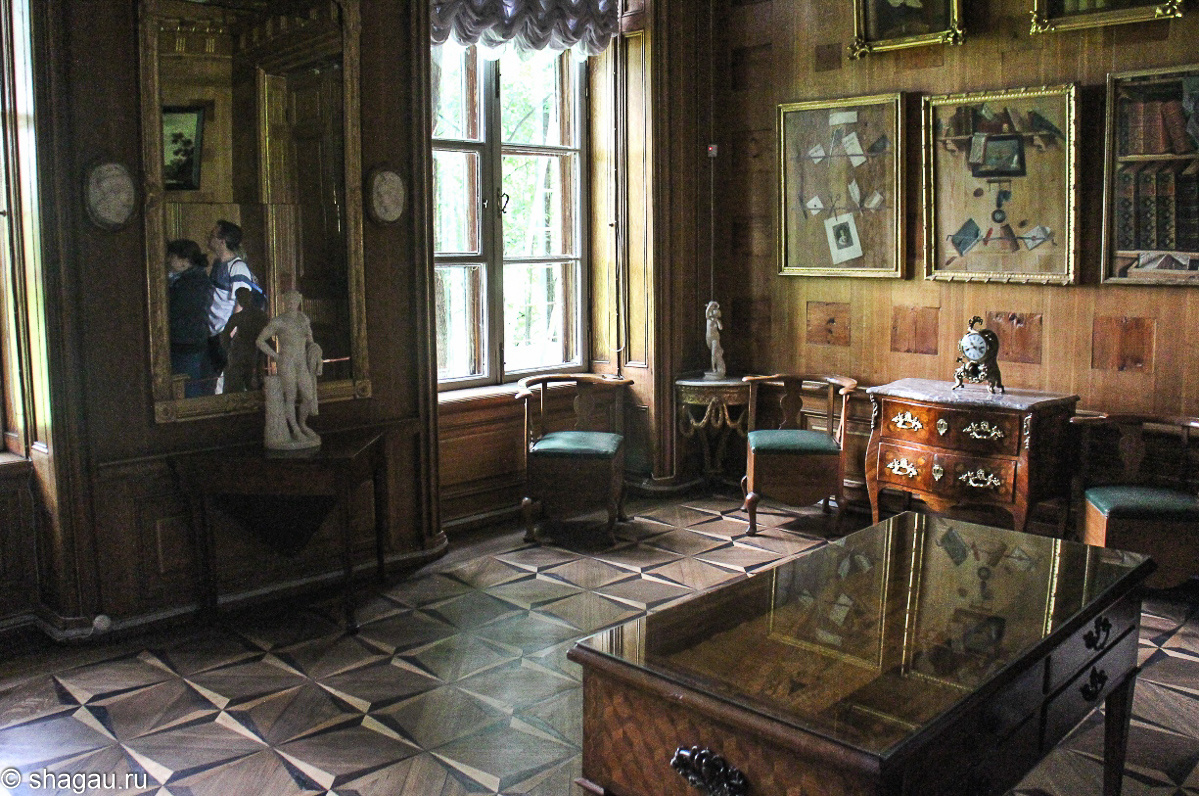
Office office

Sofa
In addition, for the daytime rest of the owners and guests, a daily bedchamber was created.

Daily bedchamber
Here you can see “Portrait of the Kalmyk girl Annushka” by the Sheremetev serf artist I. Argunov. In those days, it was fashionable in Russia to keep Kalmyk children with you. They were kidnapped by the Cossacks during internecine wars between the Kalmyk khans, and then they brought the children to the capital and presented them to representatives of the nobility. Children were given Russian names, and Varvara Alekseevna Sheremeteva got herself such a pupil.
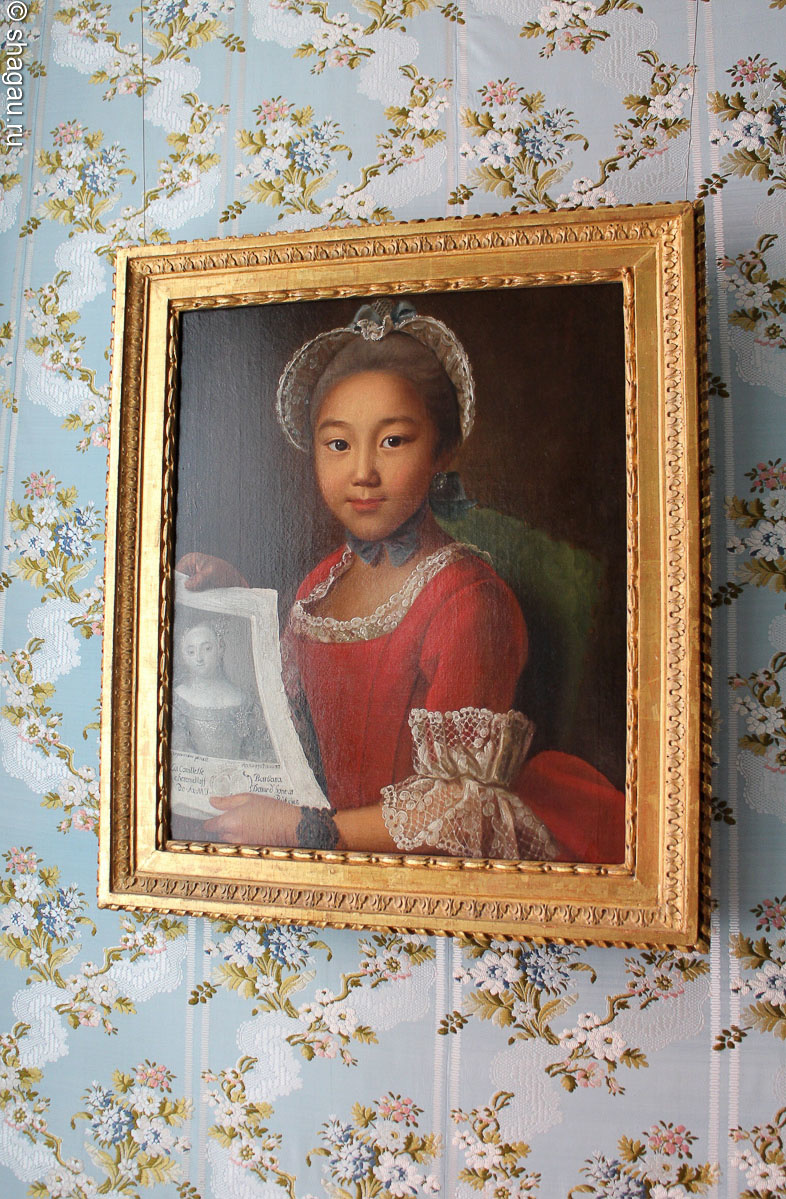
Portrait of a Kalmyk girl Annushka
In addition, in this room there are portraits of P.B.’s children. Sheremetev: heir Nikolai Petrovich and two daughters Anna and Varvara. Nikolai subsequently fell in love with his serf Praskovya Kovaleva-Zhemchugova, hired her the best teachers and enrolled her in the troupe of his serf theater. He gave stage names to his serf actors in honor of precious stones: Almazovs, Khrustalevs, Izumrudovs, Granatovs, Zhemchugovs, etc. This is how Praskovya Kovaleva received her new surname.
Due to his high position in society, the count could not immediately marry his beloved. For a long time he tried to get permission for an unequal marriage. As a result, only in 1800 they got married. However, soon after the birth of her son Dmitry, Countess Sheremeteva died. Six years later, the count also died, and their heir was raised by Praskovya Zhemchugova’s friend, former serf actress T.V. Shlykova-Granatova. But let's return to the palace.
Behind the daily bedchamber there is a painting room, where works by Western European masters of the 16th-18th centuries are collected.
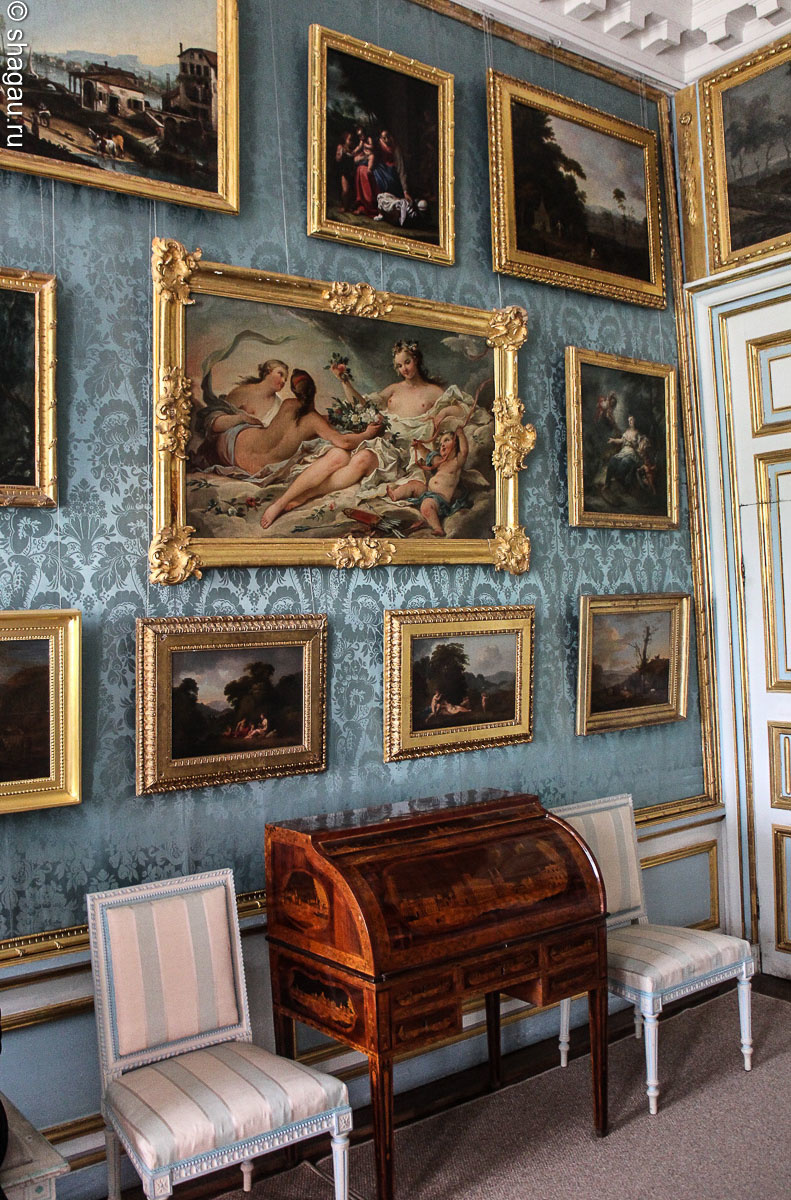
Picturesque
And immediately after the painting room is the largest room of the Big House - the Hall of Mirrors, where balls and dance evenings were held. The floor of this room was decorated with parquet made in St. Petersburg. Along one wall there is a series of windows facing the park, and on the other side there are mirrors that visually expand the space. During our visit to the palace, the Ballroom was being prepared for a concert, so the entire room was filled with chairs for spectators.
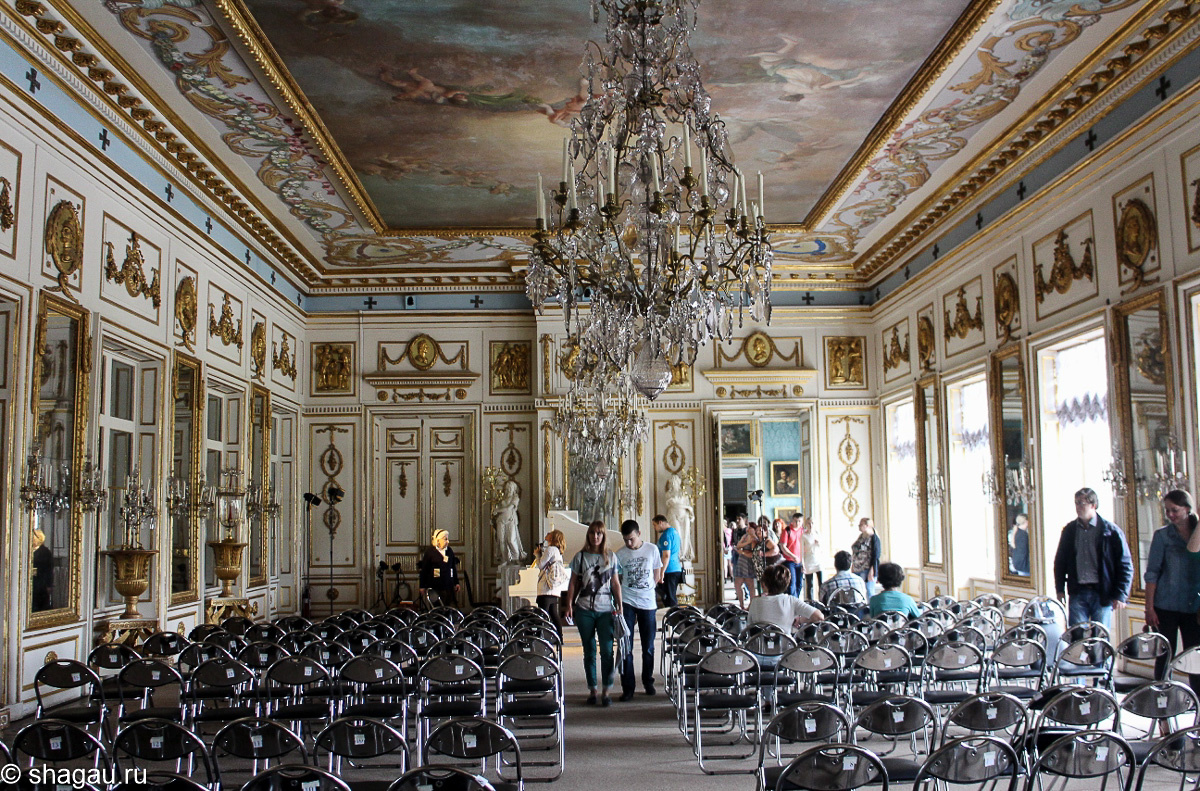
Hall of Mirrors
In general, musical evenings and concerts are often held in the Big House in Kuskovo. At one time, the Crystal Turandot theater award was even presented here. In addition, a huge number of films were filmed on the territory of the Kuskovo estate: “Vivat Midshipmen”, “Secrets of Palace Coups”, “Property of the Republic”, “Hello, I am your aunt!”, “Admiral” and many others.
In another wing of the Big House there is a State Dining Room, a Billiard Room, the Count's Bedroom and a Music Room. We go out into the manor park with a regular layout.
Kuskovo Estate Park
All elements of the park are subject to certain rules; it is distinguished by a geometric layout, the symmetry of all objects, the use of marble statues for decoration and the giving of shrubs and trees of various shapes. In the 18th century, it was the largest French park in Russia, which housed several pavilions.

Kuskovo Estate Park
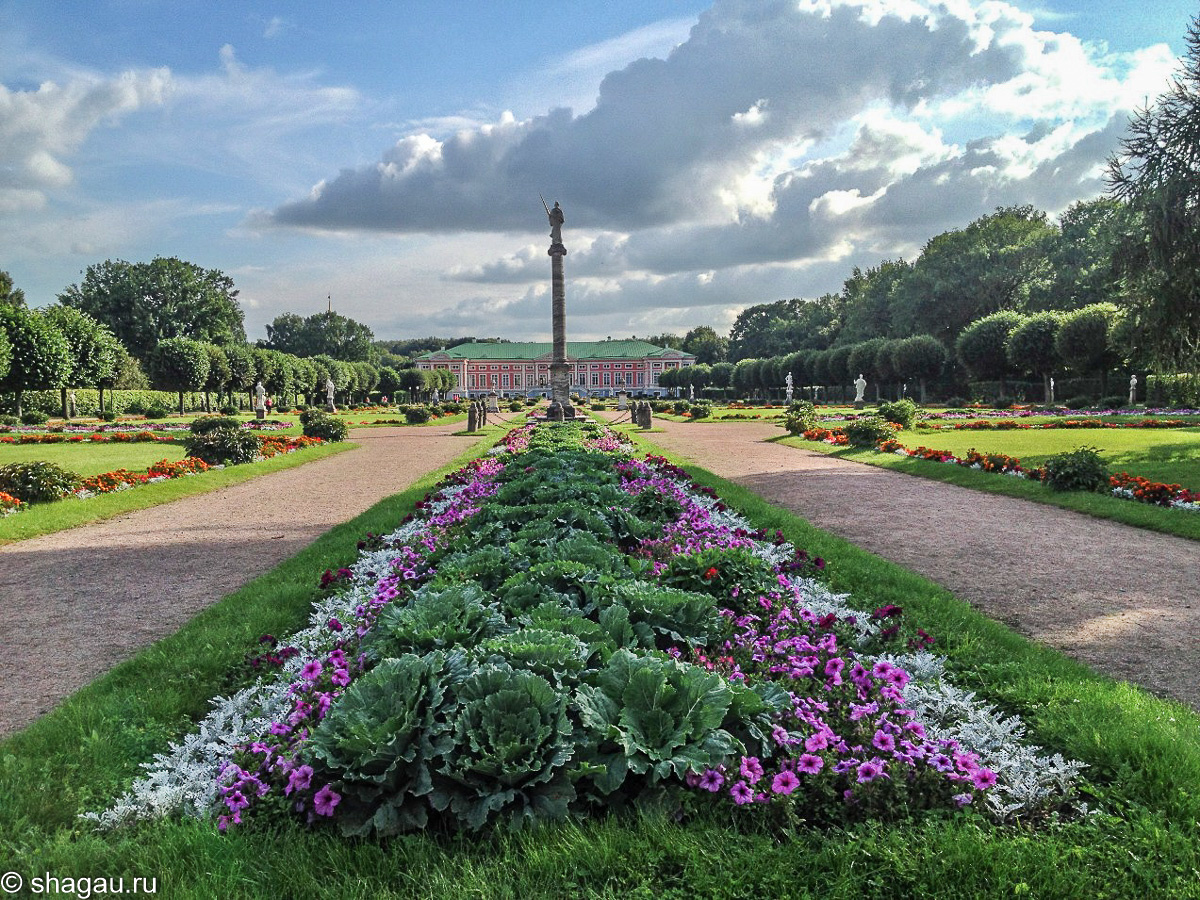
Kuskovo Estate Park
Dutch house
The very first one was built in 1749, a Dutch house in memory of the era of Peter the Great. This pavilion was also intended for guests to relax.
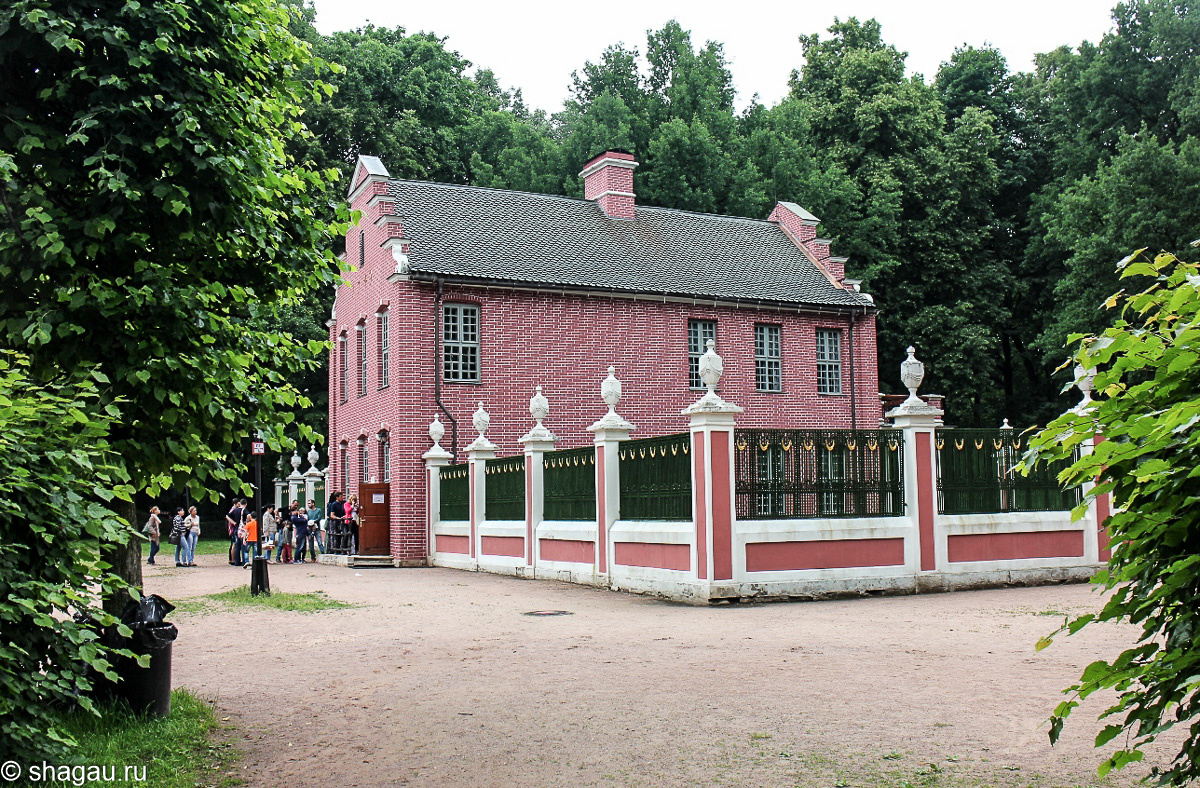
Dutch house
There was a kitchen on the ground floor, and a guest room on the second floor. The walls of this room are lined with Rotterdam tiles from floor to ceiling and decorated with objects from all over the world. The owner of the estate selected them so that they illustrated the life of the Dutch as Pyotr Borisovich Sheremetev imagined it.
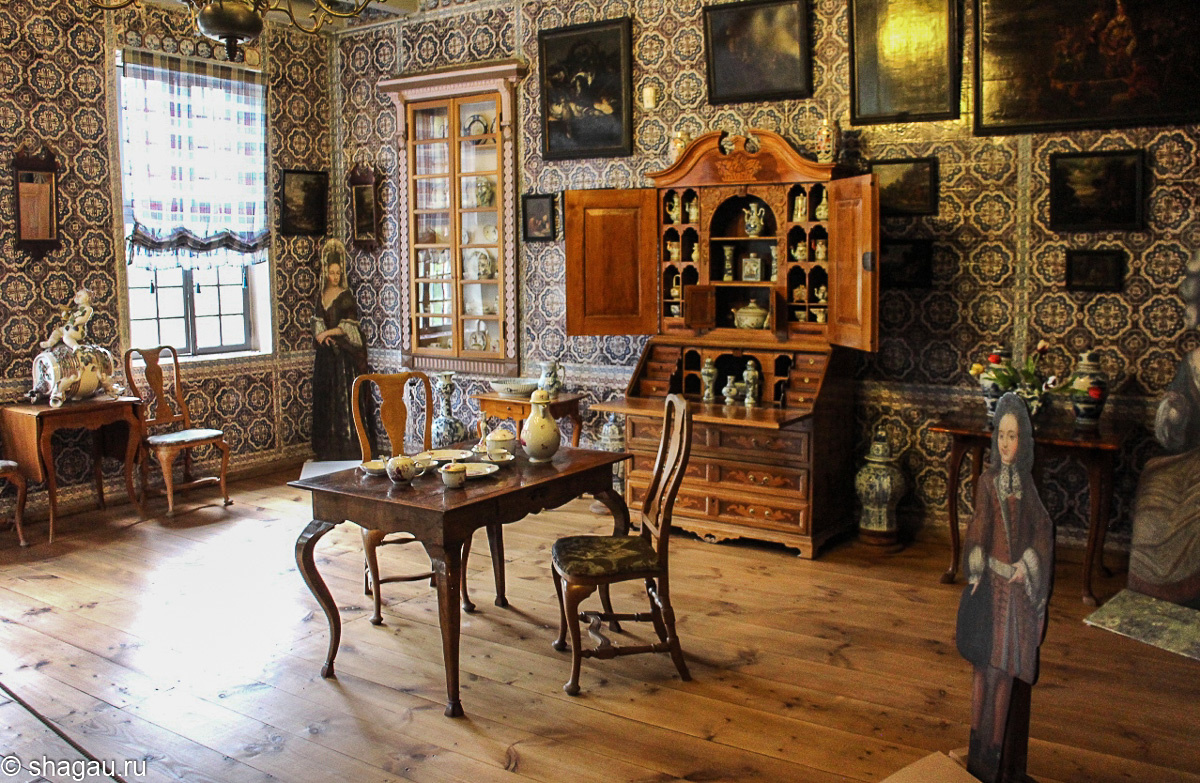
In the Dutch house
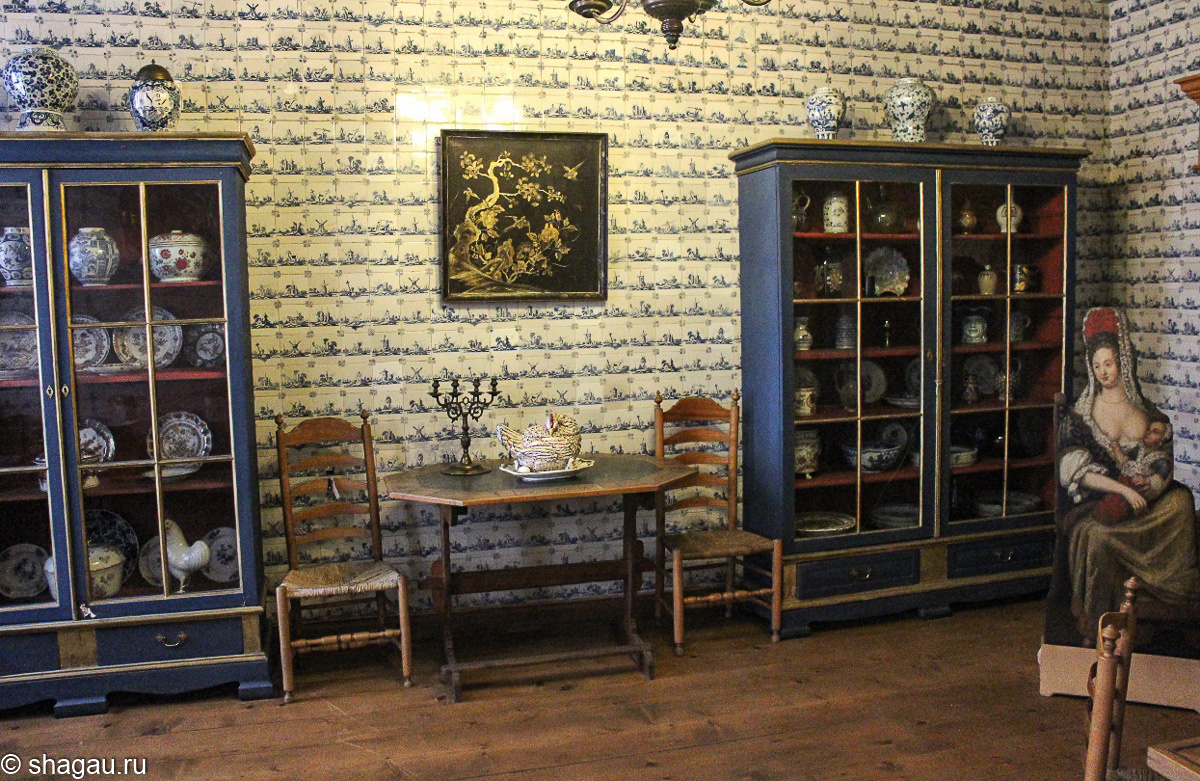
In the Dutch house
The walls of the Dutch house were decorated with about 120 paintings by Flemish artists. On the other side of the park, a Grotto was built symmetrically to the Dutch house.
Grotto in Kuskovo
Unlike the wooden palace, it was built of stone, so on a hot day there was a pleasant coolness inside. In Italy, baths were located in similar grottoes, but in Kuskovo this pavilion was also created for relaxation and a pleasant pastime.

Grotto Kuskovo
It is known that Catherine II dined in this Grotto during one of her visits. Despite the fact that it was built quite quickly, its interior decoration took about twenty years. Shells brought from all over the world were used to decorate the walls: from distant oceans to reservoirs near Moscow. In addition, marble chips and colored glass were used in the decoration.
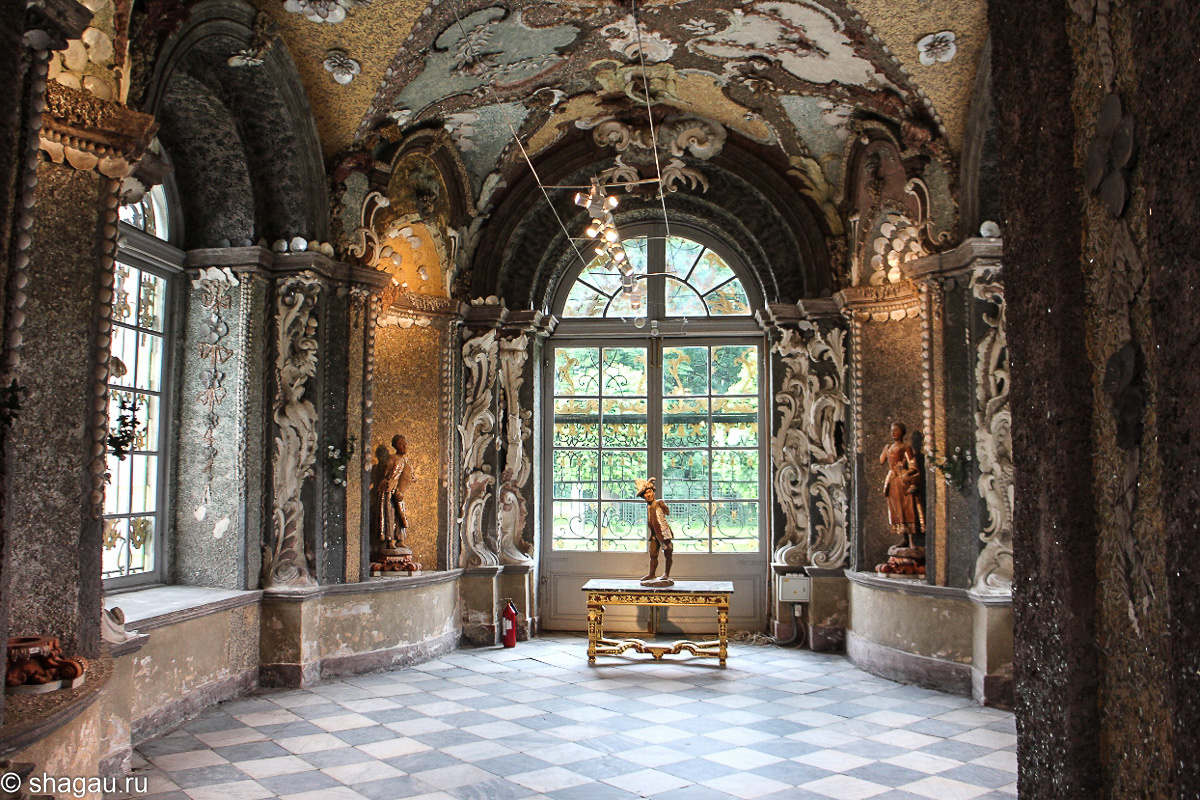
Inside the grotto
Italian house
In the 18th century in Kuskovo there were 17 ponds full of fish, which the Sheremetev guests could feed.
Hermitage Pavilion
The Hermitage pavilion, in which the guests closest to Count Sheremetev rested, has also been preserved in the park. A similar house with the same name exists in Peterhof.

Hermitage Pavilion
Just like in Petrodvorets, the Hermitage in Kuskovo has two floors. Downstairs there was a servant who prepared food and set the table. Guests were accommodated on the second floor, to which they were lifted by a special elevator mechanism. When it was time for lunch, the table was lowered down, also with the help of a special device, and raised with a wide variety of dishes. This allowed noble visitors to avoid encountering service staff at all. In the 19th century, the lifting mechanism of the Hermitage broke down and now we will no longer be able to see it in action. Unfortunately, many interior items of this pavilion were lost. Now it is mainly used as an exhibition hall.
Greenhouse in Kuskovo
Exotic plants were once grown in the Great Stone Gallery, and on the day of our visit to the estate there was an exhibition of glass products. The nearby American greenhouse houses exhibits of a unique ceramics museum in Russia, containing more than 40 thousand objects from all over the world from ancient times to the present day. This museum was created after the revolution on the basis of the porcelain collection of a representative of the old merchant family A. Morozov.
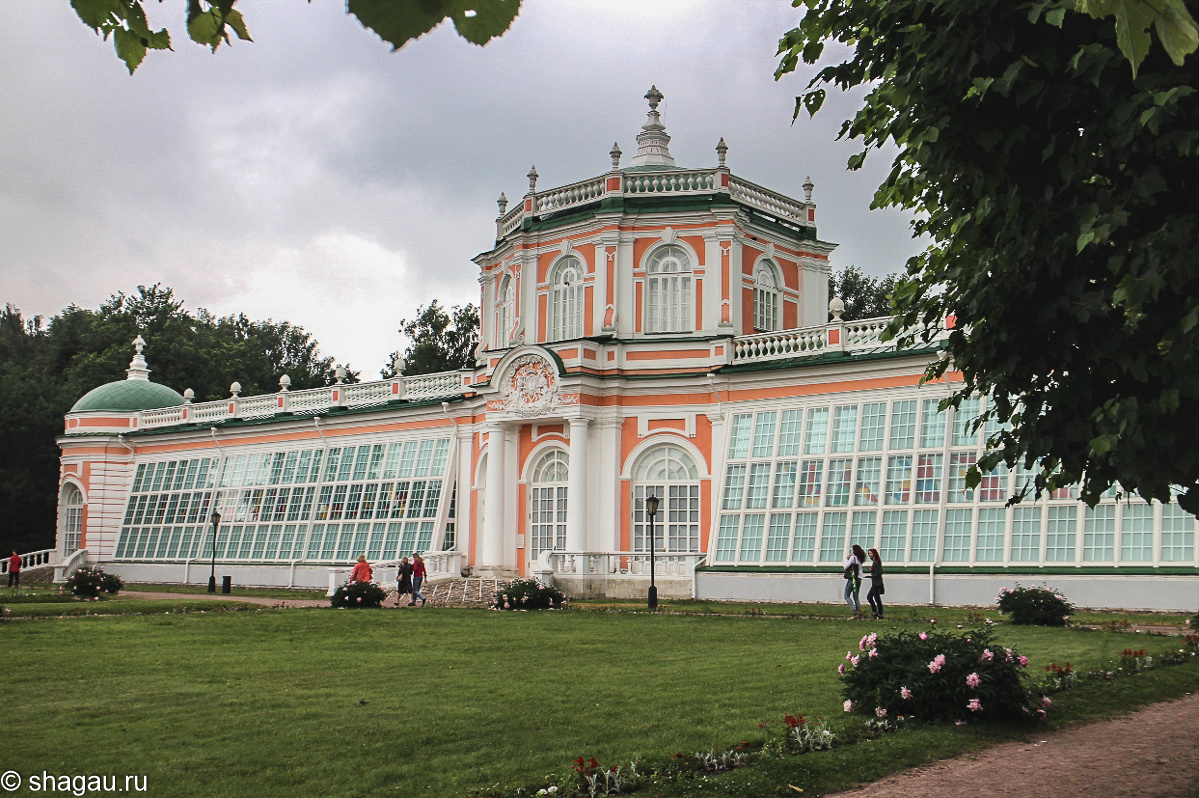
Greenhouse
Fortunately, the Kuskovo estate has survived to this day in excellent condition, including thanks to careful restoration work. The palace and park ensemble of the 18th century estate, which has no analogues in our country, is very well preserved here. It’s pleasant to stroll through the park in Kuskovo at any time of the year, and the interiors of the palace and pavilions amaze with their elegance and impeccable design. Years have passed, but the masterpieces of architecture and garden art created at the expense of Count Sheremetev still delight guests of the estate.
How to get to the Kuskovo estate:
Address: 111402, Moscow, Yunosti street, building 2
Official website of Kuskovo
Opening hours: Grotto, Palace, Italian House, Dutch House, American Greenhouse, Hermitage, Large Stone Greenhouse are open from 10.00 to 18.00 (Monday, Tuesday, and the last Wednesday of the month the museum is closed).
- m. "Novogireevo"(from the metro - trolleybus 64, bus 615, 247, stop "Ulitsa Yunosti").
- m. "Ryazan Avenue"(from the metro bus 133 and 208, stop "Museum Kuskovo")
- m. "Vykhino", then by bus 620, minibus 9M, stop "Kuskovo Museum").
